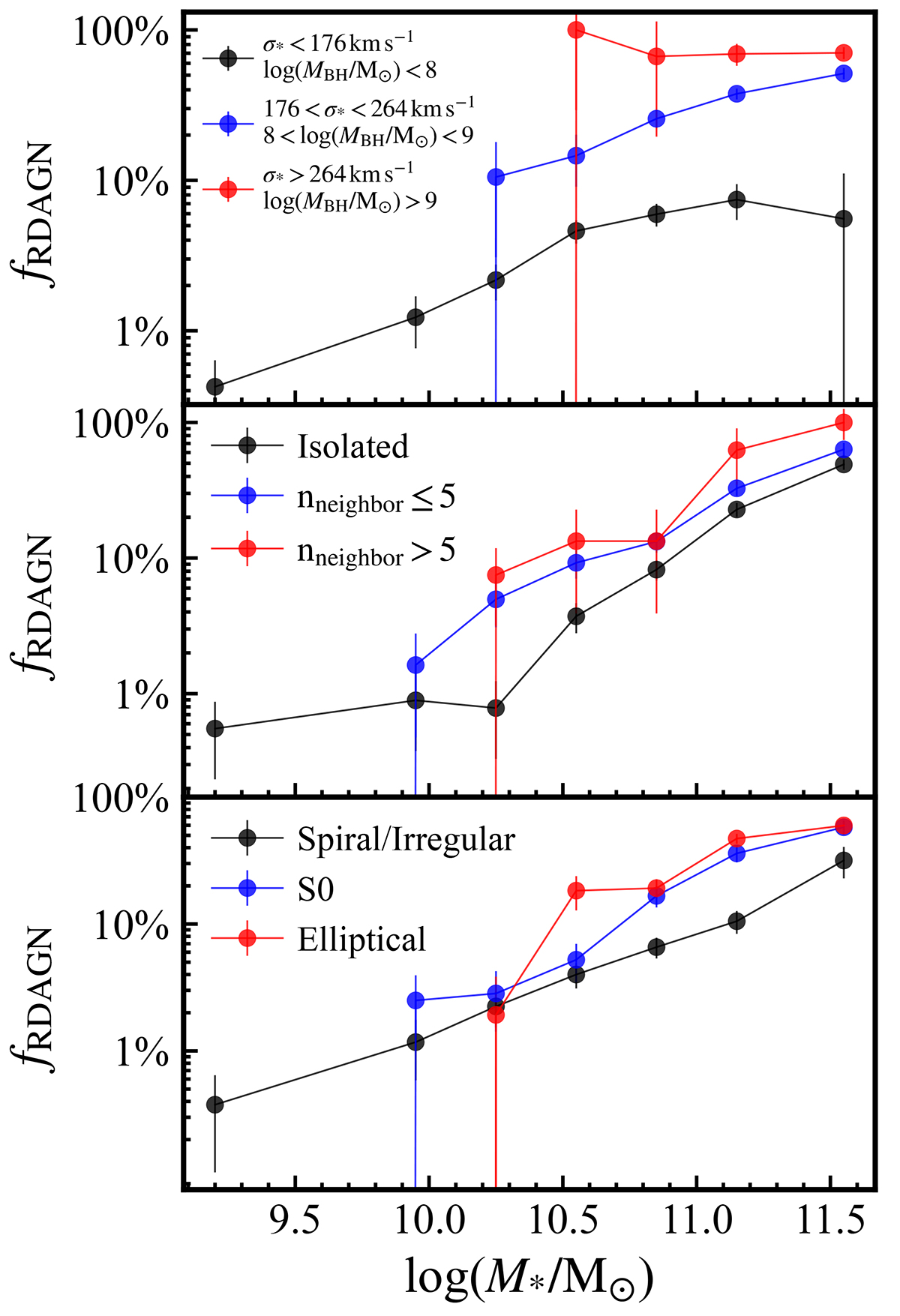Fig. 14.

Download original image
Incidence of RDAGN as a function of stellar mass, shown for different galaxy populations. From top to bottom, the galaxies are divided by stellar velocity dispersion (an indicator of the black hole mass), the number of neighbors within 200 kpc (an indicator of the cosmic environment), and Hubble type (galaxy morphology). RDAGN tend to be located in host galaxies with larger stellar velocity dispersions, denser environments, and early-type morphologies. We find that most galaxies with the largest stellar dispersion (σ* > 264 km s−1) host RDAGN, which suggests that the most massive SMBHs are always accreting in the radio mode.
Current usage metrics show cumulative count of Article Views (full-text article views including HTML views, PDF and ePub downloads, according to the available data) and Abstracts Views on Vision4Press platform.
Data correspond to usage on the plateform after 2015. The current usage metrics is available 48-96 hours after online publication and is updated daily on week days.
Initial download of the metrics may take a while.


